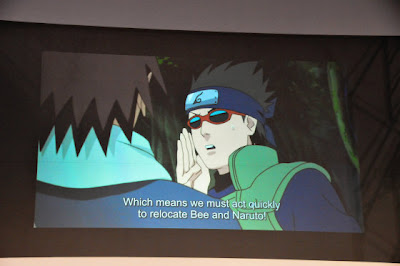Crunchyroll, for pirated anime content
From onw new article published in 2007
Crunchyroll, a sharing site primarily for anime, is attracting attention — not only for its content and fast-growing popularity, but also for its revenue model.
Rather than just putting up ads, Crunchyroll accepts “donations” in return for providing users with higher video quality. The site makes a respectable $75,000 a month in revenue, according to Techcrunch. But it’s also getting money for copyrighted anime content uploaded to the site (much of which apparently uploaded by the site owners) plainly violates the DMCA.
Pirated content isn’t all that makes the company notable. The site also makes its mark with niche content from foreign markets. While there’s plenty of noise about the global reach of the internet, language barriers still exist, keeping ideas and content from flowing as freely as they otherwise would. Crunchyroll gets around the problem by using fansubs, or foreign-language versions of anime subtitled by fans.
Many of the anime series on Crunchyroll, without the efforts of fans, would never have otherwise been dubbed and released in English-language markets. But the site’s growing popularity could be its downfall. The question is where anime distributors and licensors draw the line. Some anime that gets US distribution has already been removed from Crunchyroll. Cowboy Bebop, Gundam Wing and Dragon Ball Z, three of the most popular series, all bear removal notices stating that they are licensed by Bandai Entertainment and FUNimation Entertainment.
While other content remains, it seems unlikely that venture capitalists or buyers will be willing to touch Crunchyroll until companies and organizations based in Asia, like the Japanese Society for Rights of Authors, Composers and Performers, indicate whether they’ll take action against the company. Past experience indicates that they will — last October, Youtube removed almost 30,000 videos at the request of a group of Japanese businesses, and the JSRACP regularly criticizes YouTube for its slowness in removing Japanese-language content.
Additionally, Crunchyroll risks action from foreign licensors. Singapore and the Philippines each account for more than 20 percent of the site’s million-plus monthly unique viewers, according to Alexa — countries where artist’s organizations have been active in stamping out illegal sharing. Crunchyroll, semi-anonymously run out of San Francisco by unnamed employees of Hot or Not, likely won’t find itself able to hide behind local courts, as the Russian music vendor AllofMP3 has so far.
As Crunchyroll waits to learn the fate of its videos, it may yet be building the foundations for its future success — a huge base of anime-obsessed users. Like YouTube, Crunchyroll has some user-created content, mainly in the form of anime music videos (AMVs), which combine cut-scenes from animes with music (Note: These contents are also considered to be illegal under Japanese copyright law).
Even if the content that originally drew users eventually disappears, it may be possible for Crunchyroll to hold onto a portion of its users and become a social sharing site. (Skip) Crunchyroll could yet make arrangements with internet-savvy Asian companies whose content would never have otherwise reached outside markets.
Of course, Crunchyroll shares another similarity to YouTube: As the largest site of its kind, it is the first that licensors will go after. Meanwhile, smaller competitors likeAnimecrave.com , which has an inferior site design but keeps all its videos behind a pay wall, can continue to offer content no longer on Crunchyroll. And, as always, the more popular series are available through sites that make no bones about having links to illegal content, like tv-links.co.uk.
Youtube to offer copyright holders to monetize from pirate content
From one news article published in 2009
(Skip)
Now Youtube offers Contents ID system that can automatically detect and identify audio and video contents. It identifies contents in uploaded files from contrast of visuals or change of speed.
(Skip)
Mr. Tokuma (Senior Product manager at Youtube Japan): “Now users upload 15hours-long videos per minute on Youtbe, so it’s crucial to set up a system to efficiently detect copyright-infringing contents. Youtube is the first website that adapt such a big-scale system in order to achieve this.”
Youtube now offers 3 opitions for partner companies to deal with copyright infringing contents.
1. “Block”: To stop uploading contents before it’s published
2. “Track”: To track information about how many of their contents are illegally uploaded, but not block them.
3. “Monetize “: Copyright holders can put advisement on illegally uploaded contents whose copyrights are owned by them, and make profit from it.
(Skip)
Mr. Tokuma introduced one example of those “Monetized” contents uploaded by users. This video titled “Suzumiya Haruhi no Kishimen” was uploaded by an user which has advertisement put by Kadokawa Publishing co. Profit made from advertisements on this content belong to Kadokawa co. while the uploader can keep the content on Youtube despite it’s infringing copyright of Kadokawa co.
Mr. Tokuma also introduced a new monetizing system, for partner companies, which has been applied in Youtube America, that identify contents of videos uploaded by users and show up link to Amazon’s page where viewer can purchase matched products. “We will propose further ways to incorporate user-uploaded youtube contents into business, if they think putting links to purchase pages will increase sales of their products.”
Crunchyroll’s Business Model: Decreased illegal downloading by 70% by streaming Japanese Anime content almost at the same time of their release in Japan
Nowadays, Crunchyroll works closely with various Japanese anime studios to bring subtitled versions of these shows to online fans legally – but that wasn’t always the case. When Crunchyroll first started out in 2006, it was the brainchild of a group of University of California – Berkeley students. The Crunchyroll website offered fans a place to upload fan-translated and subtitled anime, and made these shows readily available to other fans – albeit without the animation studios or creators’ permission.
But in 2008, Crunchyroll began making moves to “go legit” – they got venture capital, pulled down all the unauthorized, fansubbed shows hosted on their site and made deals with various Japanese anime studios to post episodes on Crunchyroll.com. Now fans can either watch shows for free on a one-week delay, or pay a monthly membership fee to watch the latest shows in higher-resolution video format as soon as they’re posted. After about a year and a half since launching their “legit” version of their service, Crunchyroll recently announced that they broke even in May 2010.
source
The founders of this website Mr. Kun Gao and Mr. Vincent Shotino (Spelling of their names may not be correct) talked about the current state of overseas Anime markets and it’s fun community at Tokyo International Anime fair 2012
Vince: Crunchyroll was originally a website that Kun Gao started with his university friends as a kind of hobby. Because there’re a lot of Anime fans overseas, this website has rapidly increased users. We converted it into a company and from 2008, we fully started making this website as a legit business.
2009 was a turning point for Crunchyroll. From 2009, we licensed all contents on our website and started simulcast. This is a business that we provide users ways to watch Japanese Anime contents like 30 minutes after their broadcasts in Japan. First, we contracted with TV Tokyo and Shueisha, and got permission to deliver Anime content from Jump Magazine such as NARUTO. The reason that they wanted do business with us was because back then pirate content was a hugu issue. It’s still an issue but it was huger.
After Crunchyroll launched simulcast, pirate content has drastically decreased. For instance, the number of illegally uploaded content of NARUTO has decreased by 70%. And we can make money by this move. We created the business that Japanese Anime is distributed via foreign websites.
We have two profit sources. The first one is monthly subscription, where users pay 7USD(580JPY!!) per month and can watch as much as they want. The other is advertisement. On Crunchyroll, only paid-users can watch Anime for the first week of it’s release but after one week, everyone can watch content for free, but with advertisements.
While those big titles like NARUTO or DBZ can scoop enough money to sustain business only with advertising revenue, most of Anime contents that are aired in mid-night (such as AKB0048) are struggling to make enough money with this business model and that’s why they stick to release DVD&Blu-Ray at considerably high prices.
Main part of our business is simulcast (Most of Anime fans are eager to watch Anime simultaneously worldwide). (Skip) Viewers can watch in 1080p at the maximum.
(To watch Anime content on Crunchyroll from Japan, viewers have to access via VPN, which means it’s illegal. There are websites which provide similar services but they are much slower and poorer quality than Crunchyroll. In order to watch Anime in the highest quality without commercials in-between, Japanese must buy DVD for thousand of JPY (hundreds of USD) for one episode, or use illegal method to watch Crunchyroll.)
Kun Gao: What I talk about today is a brief history of how overseas fans had enjoyed Japanese Anime content and how they enjoy it today. And recent trends in overseas Anime market and our prospect of how Anime industry will be like in the future.













